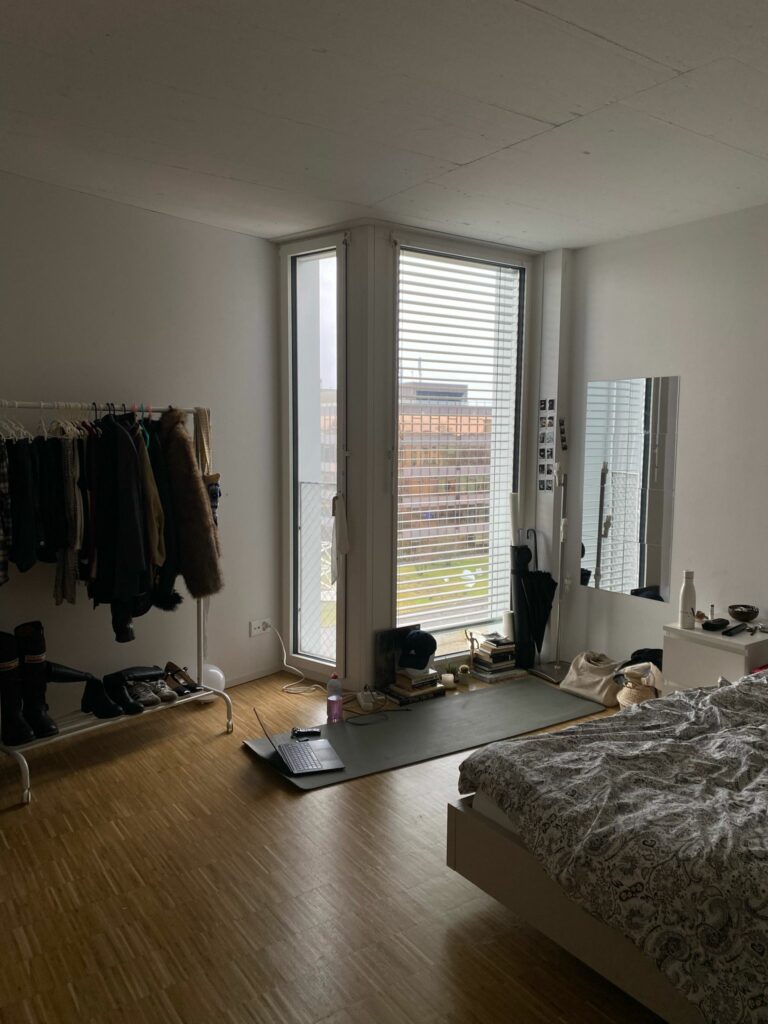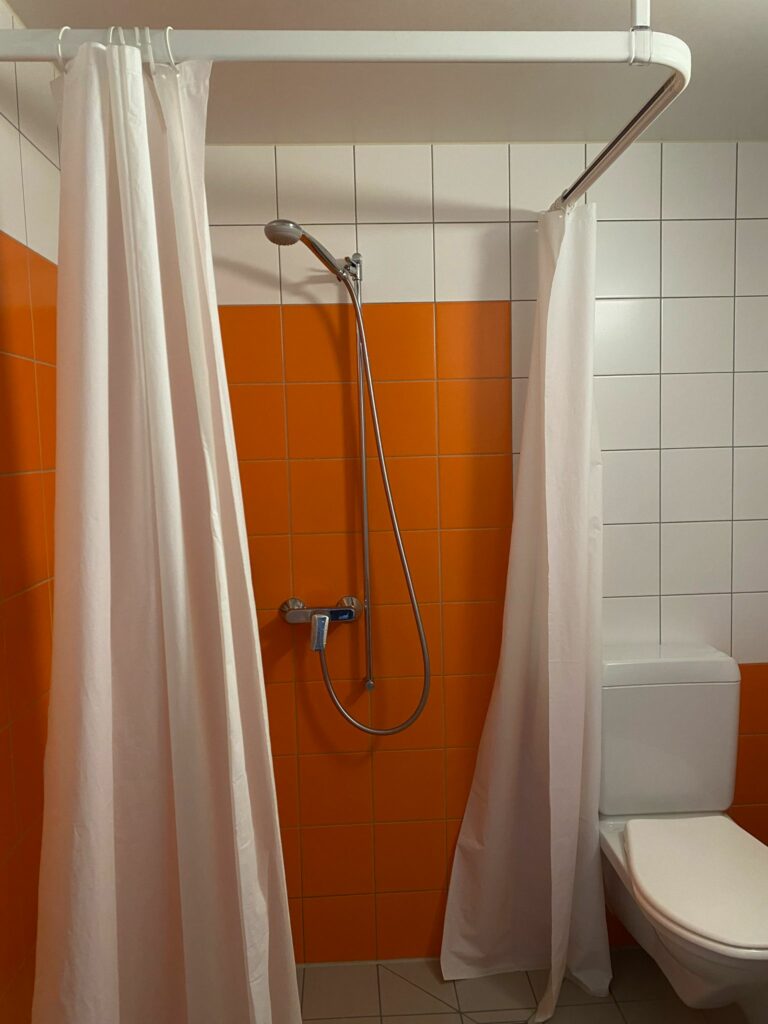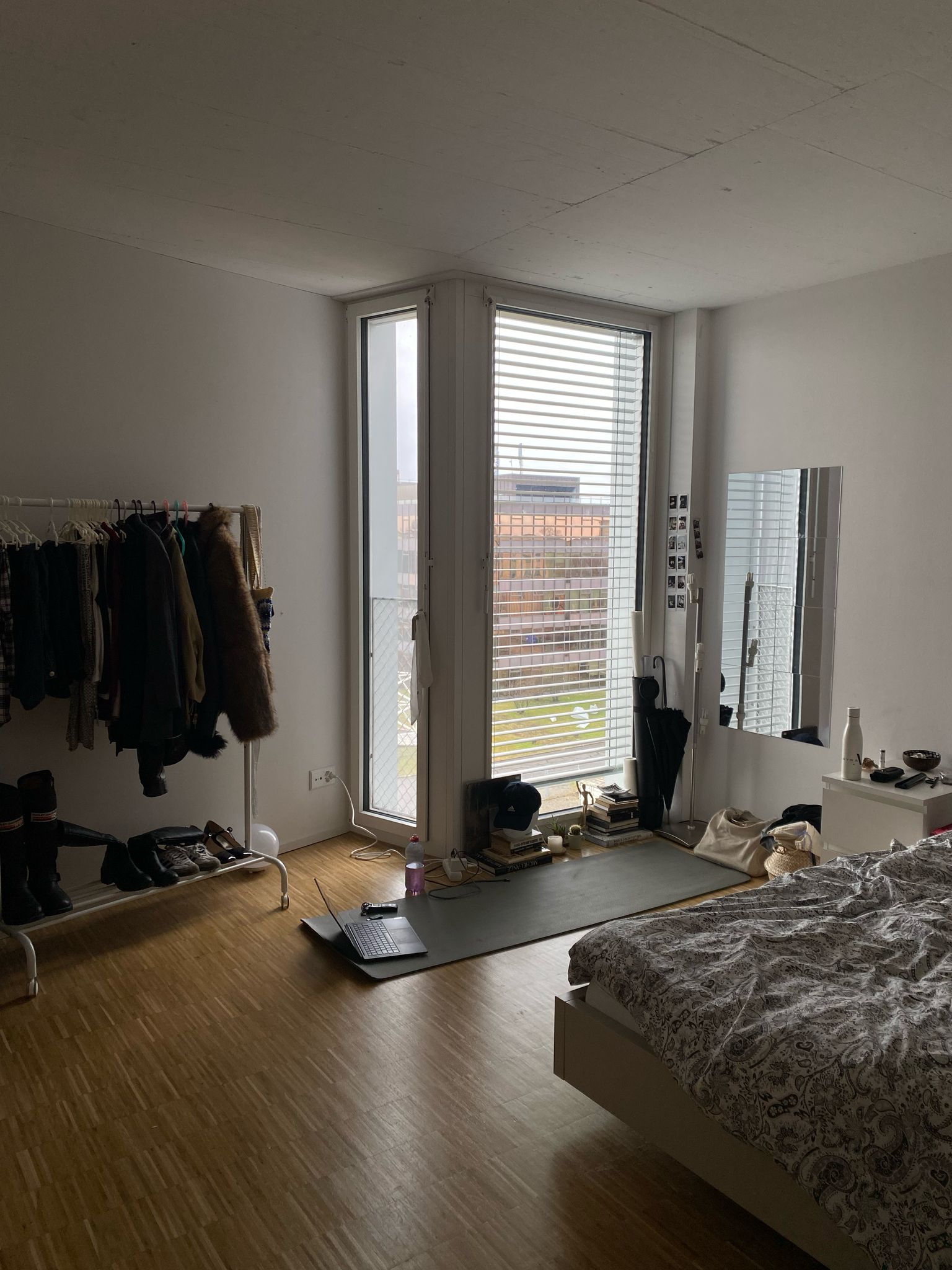Assignment 1 – Exploring Sound Qualities in Architectural Design
I compared the sound of the running shower between 1) my bedroom with the door closed, 2) my bedroom with the door open and 1) bathroom.

The bedroom is larger with a more open layout, allowing more sound dispersion and less reverberation.
Even though my bedroom doesn’t have the typical soft, absorment materials like carpet or curtains, the furnite and the L-shaped layout help to reduce sound reflections and absorb sound waves. This helps in reducing echoes and creates a more dead sound environment. The sounds can be heard crispier in bedroom, because the absorbent materials help to prevent sounds from becoming muddled by reflections.
Acoustic isolation in the bedroom may be somewhat better because of the soft furnishings and potential thicker walls, which help to block out external noises.
The sounds in the bathroom can be heard very clearly from the bedroom, but the sounds from the bedroom doesnt reach the bathroom with the same quality.
running water from bedroom with the bathroom door closed:
running water from bedroom with the bathroom door open:
Even though in the both cases the sound can be heard very well, the door being open or closed makes a great difference, indication the change in isolation.

Smaller, with a more compact shape that can cause sound to reflect more quickly, leading to a higher level or reverbation & echo.
The surfaces are consistend of hard, reflective materials like tiles, glass and mirrors, which reflects sounds rather than absorbing it, which can cause sound to bounce around the space, making it louder and more echoey. This is very noticable, since the bathroom itself is also very small and enclosed, resulting in making even low-level sound like running water or someone speaking & singing louder than they would in a bedroom.
Due to the hard, reflective surfaces, the sound is more diffuse and experience muddiness or distortion. The sound is less clearer in comparison.
The sound travels easier, resulting in the running water or vioces to be heard clearer from the other rooms.
running water from bathroom:
BEDROOM: quiet & subdued & controlled & clarity
BATHROOM: loud & echoey & reflective
Assignment 2 – Exploring the Emotional Impact of Everyday Sounds
Our emotional responses to different sound environments are deeply tied to how our brain processes sound, memory, and social context.
1) Jazz Bar – Why Does It Feel Warm, Nostalgic, and Intimate?

Sound Characteristics:
• Swinging rhythms & syncopation – Keeps the brain engaged without overwhelming it.
• Rich, warm instrumentation (saxophone, upright bass, piano) – Deep, resonant sounds feel soothing.
• Moderate tempo & dynamic range – Avoids extremes, maintaining a relaxed state.
Why It Affects Us Emotionally:
• Memory Activation: Jazz is often associated with past eras (e.g., 1920s, 1950s), so it triggers nostalgia even if we didn’t live in those times.
• Dopamine Release: The unpredictability of jazz (like improvisation) keeps our brain anticipating the next note, which releases dopamine—making it feel pleasurable.
2) Museum with Soft Music – Why Does It Feel Elegant, Serene, and Contemplative?

Sound Characteristics:
• Soft, slow, melodic (often piano, accordion, or orchestral strings) – Creates a dreamlike atmosphere.
• Light reverberation in a museum space – Sounds bounce softly, enhancing the feeling of openness and calm.
• Moderate-to-low volume – Doesn’t demand attention, allowing for quiet thought.
Why It Affects Us Emotionally:
• Encourages Focus: Soft, non-intrusive music allows the brain to process visual art more effectively. Background music at low complexity helps us concentrate without overstimulating the prefrontal cortex.
• Cultural & Aesthetic Associations: This particular music is often linked to romance, art, and philosophy. This priming effect makes us feel more sophisticated or introspective.
• Heart Rate & Breath Synchronization: Slower tempos (60–80 bpm) can sync with our heartbeat, slowing it down and promoting relaxation.
3) Rave with Techno Music – Why Does It Feel Euphoric, Intense, and Dissociative?

Sound Characteristics:
• High BPM (120–150+) & strong basslines – Stimulates adrenaline and movement.
• Repetitive beats & hypnotic structure – Induces a trance-like state.
• Loud volume & immersive acoustics – Overwhelms individual thought, leading to collective energy.
Why It Affects Us Emotionally:
• Increased Dopamine & Endorphins: The anticipation of beat drops triggers a dopamine surge, leading to pleasure and excitement. The high-energy movement also releases endorphins, creating a runner’s high effect.
• Altering Time Perception: The repetitive beats affect our cerebellum, making time feel distorted—hence the sensation of losing oneself in the music.
Each acoustic environment hacks our brain in different ways to create specific emotional responses.



